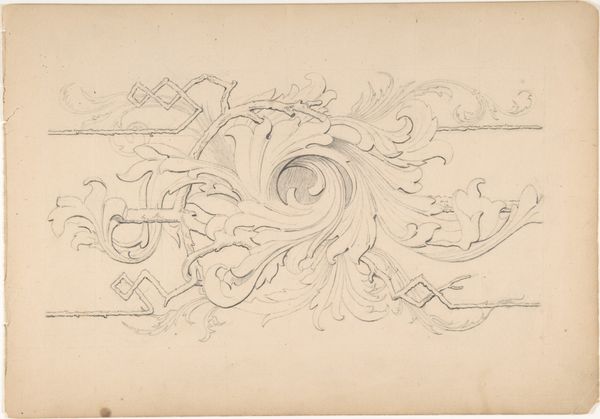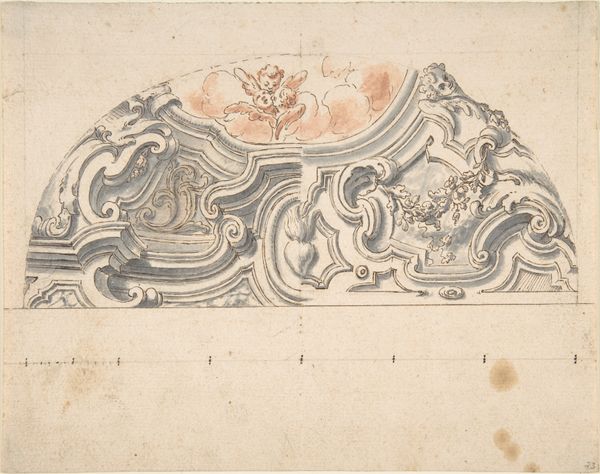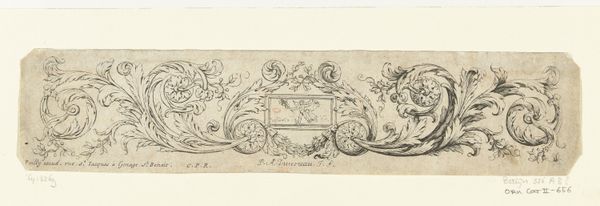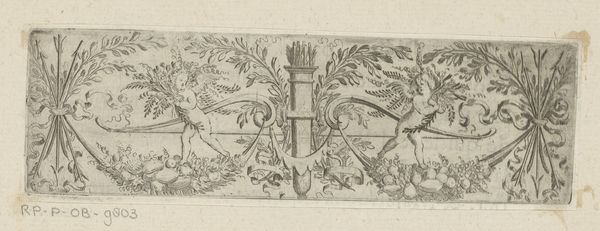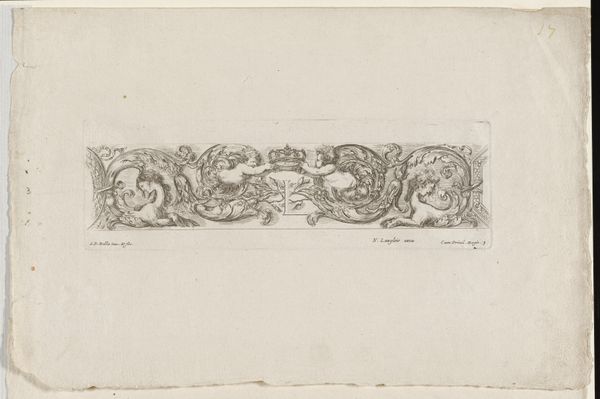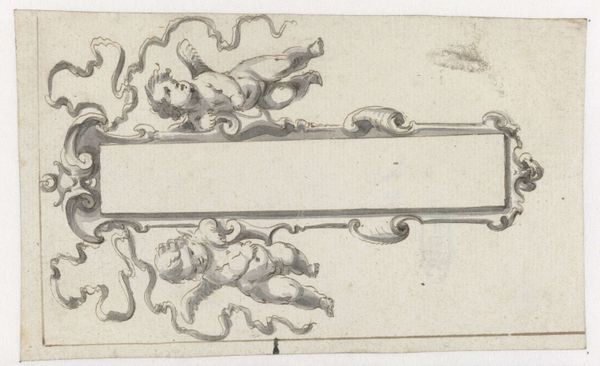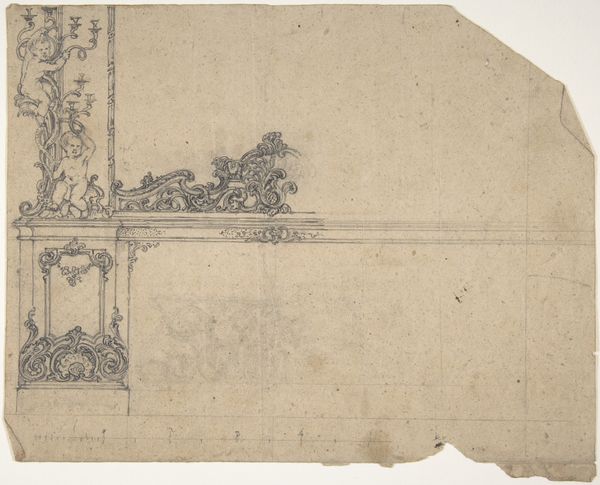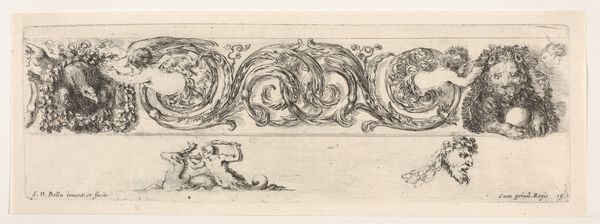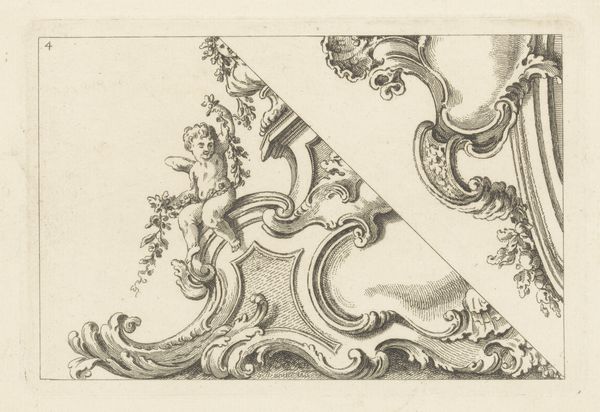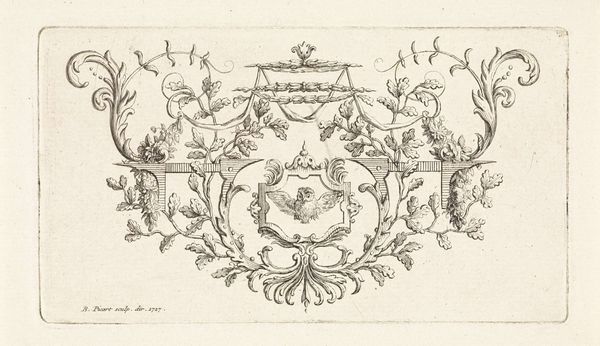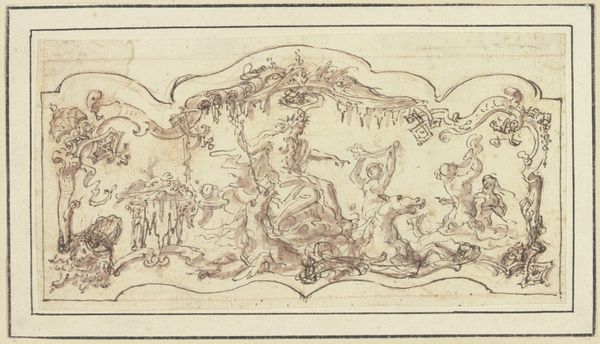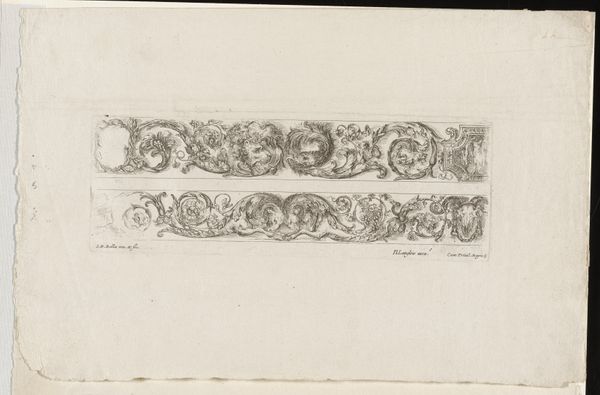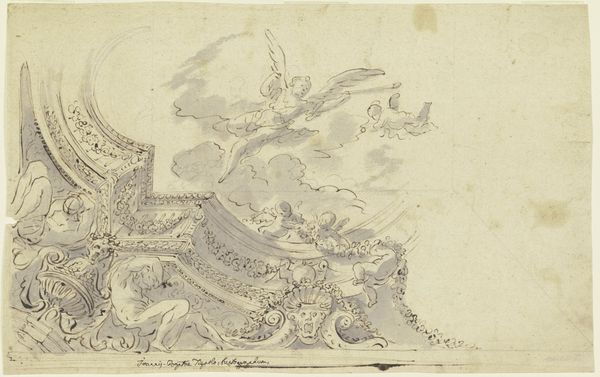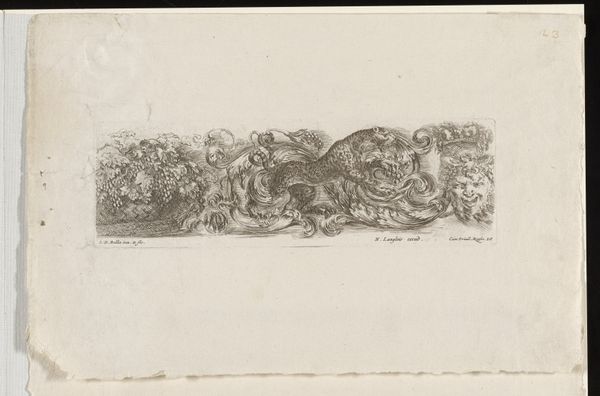
#
amateur sketch
#
light pencil work
#
pencil sketch
#
old engraving style
#
incomplete sketchy
#
hand drawn type
#
personal sketchbook
#
pen-ink sketch
#
sketchbook drawing
#
initial sketch
Dimensions: height 24 mm, width 65 mm
Copyright: Rijks Museum: Open Domain
Curator: Here we have a pencil sketch from the late 18th century, sometime between 1734 and 1801, by Noël Le Mire, titled "Vignet met guirlande", held here at the Rijksmuseum. Editor: It's incredibly delicate, isn't it? So much fine, light pencil work to create the impression of... texture and form. I’m drawn to its tentative, unfinished air, it gives me insight into the creative process. Curator: Precisely. As a vignette, we can presume this drawing served a very specific function. Likely designed for use in a book, perhaps as a headpiece to a chapter or to decorate a title page. Le Mire was a noted engraver and this would be an early study for his work. Editor: Which immediately raises questions about the labor involved in replicating this delicate drawing onto a printing plate. Can you imagine the skill and the time needed? How would such illustrations affect the overall cost of books and their accessibility? Curator: It absolutely highlights the socio-economic dimension. These details weren’t just aesthetic, they communicated status and taste. Engravings like these signaled a level of luxury and sophistication for the book's audience. They influenced patronage and helped shape reading culture. Editor: I notice how the hand-drawn, almost informal quality contrasts so sharply with the refined, classical subject matter of the garland. What does it tell us about shifting relationships with aesthetics and the audience who were now appreciating preliminary sketches, not just highly polished results? Curator: That's an astute point. We see a democratization of art appreciation beginning to occur. What might once have remained unseen in the artist’s studio is now valued for its own merit, suggesting a broader acceptance and fascination with the artistic process itself. Editor: This single study on paper allows us to explore complex facets of the book trade, artisanal production, and developing tastes during the period. What seems initially delicate is embedded in social and material history. Curator: Yes, and it demonstrates how a simple design element contributes to a bigger story of production, distribution, and consumption, which remains ever relevant to contemporary cultural and aesthetic tastes.
Comments
No comments
Be the first to comment and join the conversation on the ultimate creative platform.
